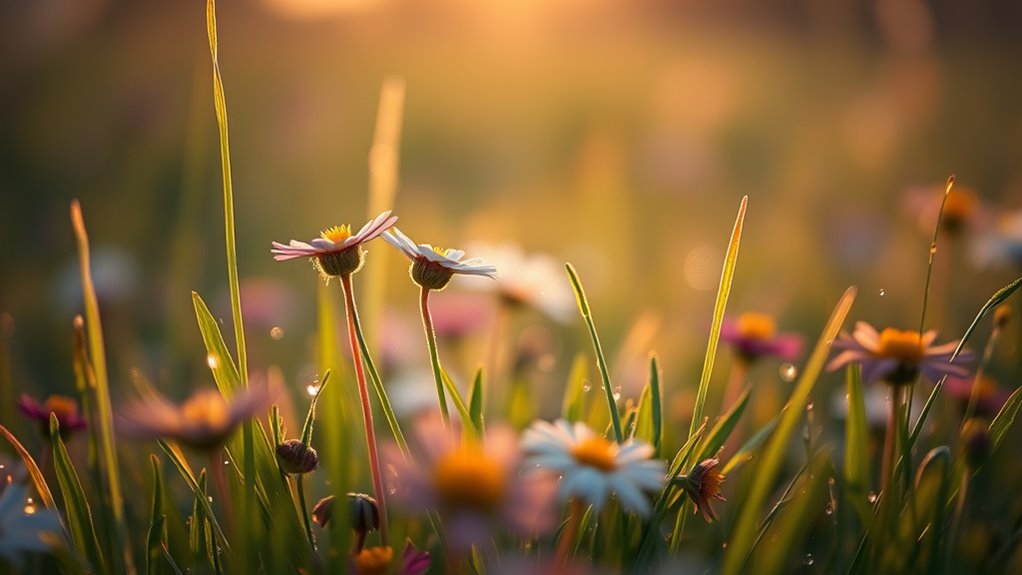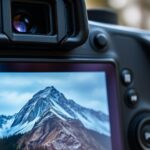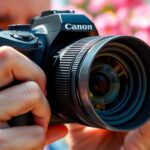Balancing sharpness and noise involves understanding your camera’s sensor size, ISO settings, and aperture choices. Use lower ISO and stabilize your camera to reduce noise and achieve crisp detail. Narrow or mid-range apertures improve sharpness without softening images, while proper shutter speed minimizes motion blur. Post-processing with targeted noise reduction and sharpening helps preserve details. If you keep these principles in mind, you’ll activate clearer, crisper images—continue exploring for more expert tips.
Key Takeaways
- Use appropriate ISO settings: lower ISO to reduce noise while maintaining sufficient exposure.
- Balance aperture and shutter speed: mid-range apertures and faster shutter speeds improve sharpness with minimal noise.
- Apply targeted noise reduction techniques in post-processing, focusing on high ISO images to preserve detail.
- Stabilize your camera with tripods or support to prevent motion blur and allow lower ISO use.
- Understand sensor capabilities and adapt settings accordingly for optimal sharpness and minimal noise.
Understanding the Basics of Sharpness and Noise
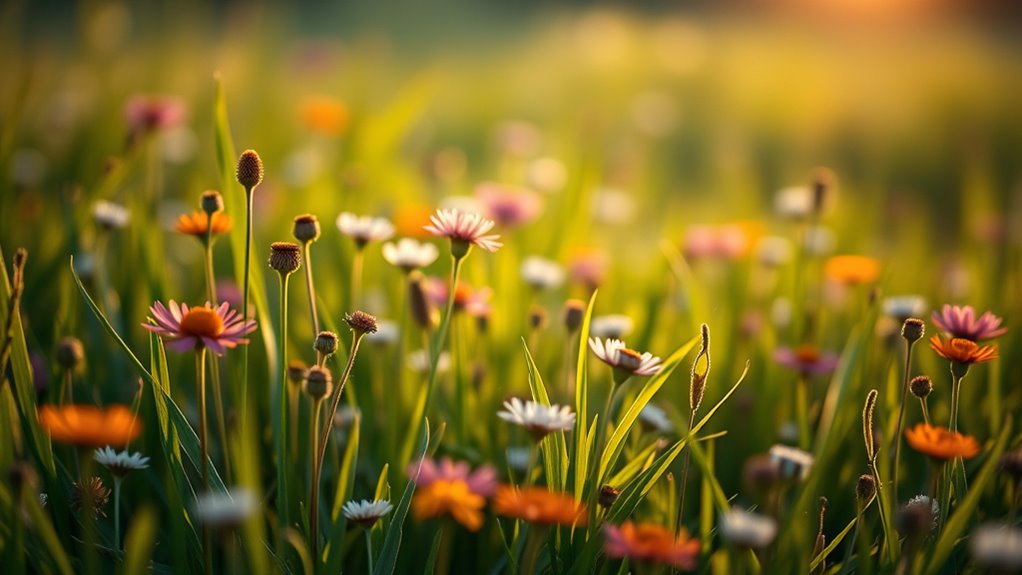
Understanding the basics of sharpness and noise is essential for improving your photos. Your camera’s sensor size notably influences both factors, with larger sensors capturing more detail and producing clearer images. A bigger sensor typically reduces noise at higher ISO settings, helping your photos stay sharp even in low light. Sensor size plays a crucial role in the overall image quality, as it determines the amount of light captured and impacts the depth of field. Additionally, sensor technology advancements continue to improve the balance between sharpness and noise reduction, leading to better image quality in modern cameras. Modern sensors also incorporate noise reduction techniques that further enhance image clarity. Additionally, image processing algorithms are increasingly sophisticated, enhancing clarity and reducing unwanted noise during post-processing. Remember, sharpness isn’t just about focus—it’s also about how well your gear handles detail and noise levels in various lighting conditions. Understanding this foundation helps you make smarter choices and improve your overall image quality.
How ISO Settings Affect Image Quality
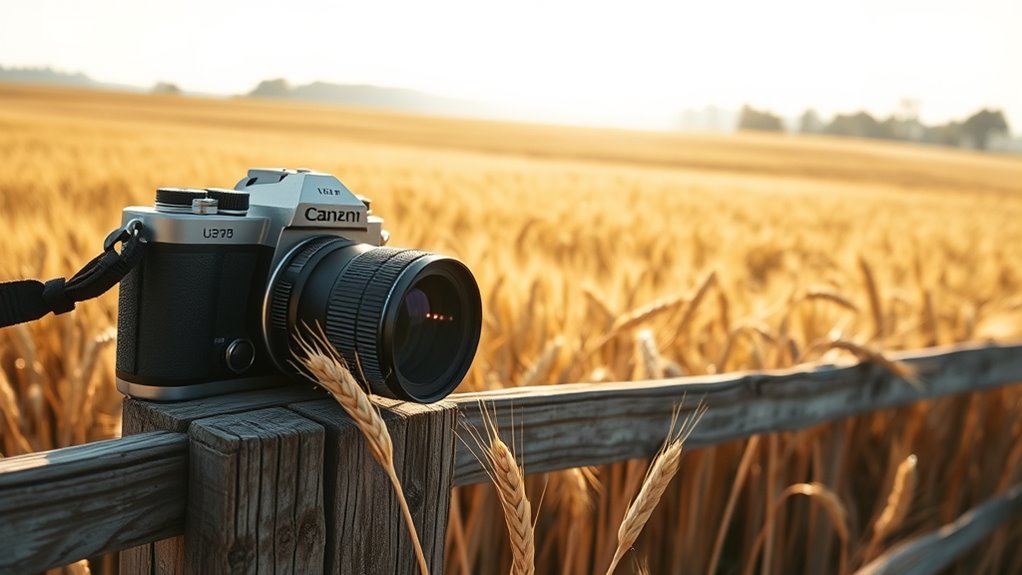
Adjusting your ISO setting directly impacts your image quality by controlling the camera sensor’s sensitivity to light. When you increase ISO, your sensor becomes more receptive, allowing you to shoot in lower light conditions without a flash. However, higher ISO can also reduce your camera’s dynamic range, limiting the tonal differences between shadows and highlights. Sensor size plays a role here—larger sensors handle high ISO better, producing cleaner images with less noise. Conversely, smaller sensors tend to introduce more noise at increased ISO settings, which can compromise sharpness and detail. Balancing ISO with your lighting situation is vital to maintaining image quality. Keep your ISO as low as possible to preserve detail, and only boost it when necessary to avoid unnecessary noise and loss of dynamic range. Understanding performance tuning principles can help you optimize your camera settings for different shooting scenarios. Additionally, exploration of optimal ISO settings can enhance your ability to adapt quickly to changing conditions and capture clearer images, especially when considering sensor capabilities and limitations. Being aware of cybersecurity vulnerabilities related to digital devices can also help protect your equipment from potential threats that could impact your workflow. Moreover, understanding image sharpness can guide you in making precise adjustments for clearer results.
Choosing the Right Aperture for Clarity and Noise Control
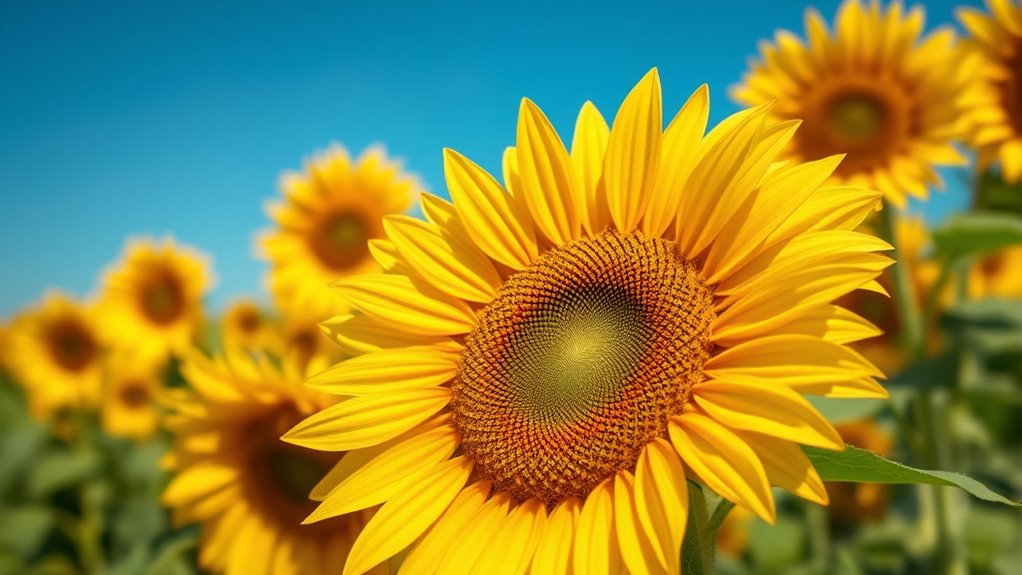
Choosing the right aperture is essential for achieving sharp images while controlling noise. A proper aperture reduces lens distortion and helps maintain clarity across your shot. Smaller apertures (higher f-numbers) increase depth of field but can introduce diffraction, softening detail. Larger apertures (lower f-numbers) enhance sharpness but risk increased noise in low-light conditions. Adjusting your aperture also affects color grading; a wider aperture may create softer, more ambient tones, while a narrower one sharpens details but can cause color shifts. Use this table to guide your choices:
| Aperture | Effect on Sharpness & Noise | Notes |
|---|---|---|
| Wide (f/1.4-f/2.8) | Sharp focus on subject, more noise | Good for low light |
| Mid-range (f/4-f/8) | Balanced sharpness, minimal noise | Versatile |
| Narrow (f/11-f/22) | Increased depth of field, diffraction softening | Best for landscapes |
Additionally, understanding aperture effects helps photographers optimize image quality in various scenarios. Exploring depth of field control can further enhance your photographic results by tailoring focus to your creative intent. Being aware of lens distortion is also crucial for producing accurate images without unwanted warping. Incorporating Glycolic Acid benefits into skincare routines can also improve overall skin clarity, which complements well-executed photography by enhancing skin appearance in portraits. Understanding vetted indoor gardening solutions can also inspire creative ways to incorporate natural elements into your photography backgrounds.
The Role of Shutter Speed in Sharpness and Noise Management
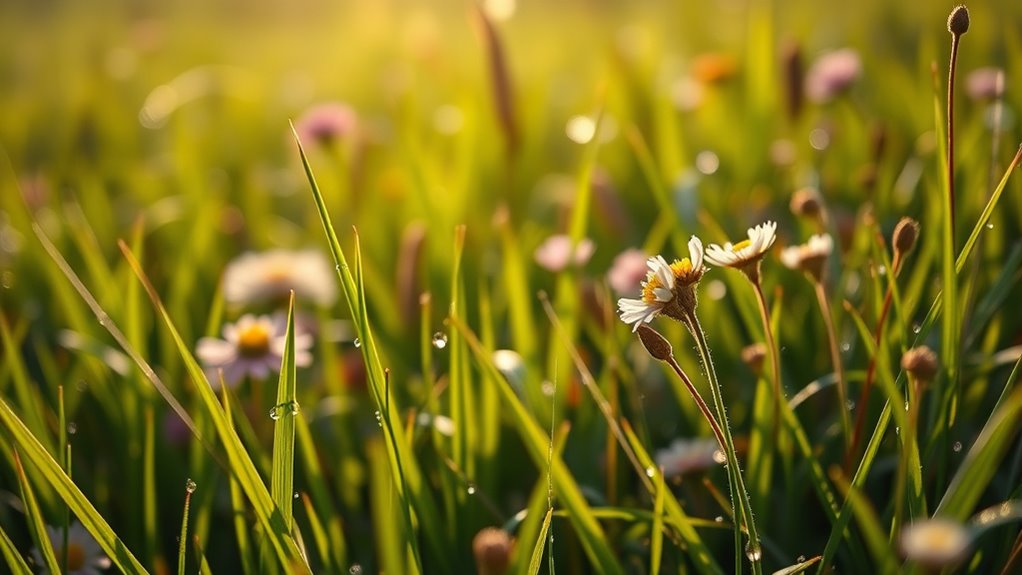
Using a faster shutter speed reduces motion blur, helping you capture sharper images. However, longer exposures can introduce more noise, especially in low-light conditions. Balancing shutter speed is key to achieving sharpness without sacrificing image quality. Additionally, employing proper lighting can minimize the need for extremely long exposures, thereby reducing noise and enhancing overall image clarity. Incorporating automated data analysis from AI-driven tools can also help photographers optimize exposure settings based on scene conditions, further improving image quality. Informed adjustments based on industry trends can further optimize your results. Incorporating innovative materials from brands like Nike Tech can also influence exposure settings by improving natural lighting conditions and reducing the need for post-processing. Moreover, understanding sensor technology advancements can help you select equipment that naturally reduces noise at higher ISO settings.
Faster Shutter, Less Blur
A faster shutter speed can substantially improve your image sharpness by minimizing motion blur caused by subject movement or hand shake. When you crank up the shutter speed, you freeze motion more effectively, resulting in crisper details. This is especially helpful in dynamic scenes where even slight movements can cause blur. Keep in mind, however, that faster shutter speeds reduce the light reaching your sensor, which might introduce noise if you’re shooting in low light. Additionally, quick shutter changes can sometimes lead to lens flare or uneven color grading if lighting isn’t controlled. To get the best results, balance your shutter speed with aperture and ISO. This way, you’ll achieve sharp images with minimal blur while maintaining noise levels you can manage. Advances in camera sensor technology continue to improve low-light performance, enabling sharper images even at high shutter speeds.
Longer Exposure, More Noise
Longer exposures allow more light to hit your sensor, revealing more detail and creating a sense of motion or atmosphere. In long exposure photography, extending shutter speed can enhance low-light scenes but also increases noise, especially in astrophotography. Noise in astrophotography becomes more apparent as exposure time lengthens, making it essential to balance your settings. Using longer exposures captures faint stars and celestial details, but excessive duration can introduce graininess. To manage this, consider using a lower ISO, applying noise reduction techniques in post-processing, or stacking multiple shorter exposures. Understanding how shutter speed impacts both sharpness and noise helps you optimize your images. Additionally, choosing the appropriate headphone jack type can be crucial for reviewing your footage with high-quality audio monitoring, ensuring your sound quality matches the sharpness of your images. Employing performance cookies can also help monitor how your camera settings influence overall image quality, guiding you toward better results. With the right approach, you can achieve stunning results without sacrificing clarity or introducing unwanted noise.
Post-Processing Techniques to Balance Detail and Grain
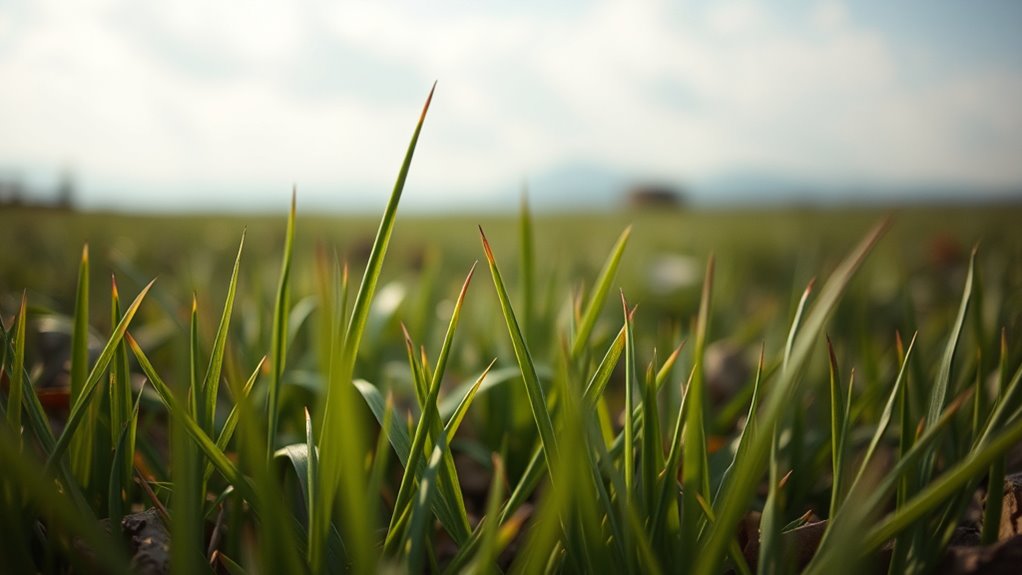
When you apply post-processing, you need to enhance fine details without amplifying noise. Using targeted noise reduction strategies can smooth grain while preserving sharpness, but it takes careful adjustment. Balancing sharpness and grain requires you to fine-tune techniques that boost detail without sacrificing image quality.
Fine Detail Enhancement
Balancing fine detail and noise during post-processing can be challenging, but with the right techniques, you can improve image clarity without amplifying grain. Start by sharpening selectively, focusing on edges and textures rather than overall contrast, to avoid emphasizing noise. Use masking tools to target specific areas needing detail, preserving smooth regions. Be mindful of lens flare, which can obscure details; reduce its impact with careful adjustments. During color grading, avoid overly boosting contrast or saturation, as this can exaggerate noise and grain. Instead, aim for subtle enhancements that highlight fine details without introducing artifacts. Fine-tuning these elements ensures your images remain sharp and detailed while maintaining a natural, clean appearance.
Noise Reduction Strategies
After sharpening selectively to enhance detail, the next step is to manage noise effectively during post-processing. Proper noise reduction balances preserving detail while minimizing grain. Start by ensuring your sensor calibration is accurate, as miscalibration can amplify noise. Use software tools to target specific areas, reducing noise without losing sharpness. Be cautious of lens flare effects, which can mimic noise and complicate adjustments. Here’s a quick guide:
| Technique | When to Use | Tips |
|---|---|---|
| Luminance Noise Reduction | High ISO images | Apply gradually to avoid softness |
| Color Noise Reduction | Flat-toned areas | Focus on preserving color accuracy |
| Selective Denoising | Detail-rich regions | Use masks for precision |
| Calibration Checks | During shooting & editing | Regularly verify sensor calibration |
These strategies help you balance detail and grain effectively.
Balancing Sharpness and Grain
Achieving the right balance between sharpness and grain is essential in post-processing, especially when you want to enhance detail without introducing distracting noise. To do this, start by addressing lens distortion, which can soften or warp details—correcting it helps maintain clarity. Next, adjust sharpness carefully; too much can emphasize grain, while too little can make images look dull. Use masking techniques to apply sharpening selectively to areas needing detail, preserving natural textures. When it comes to color grading, avoid overly saturated or contrasted looks that can exaggerate noise. Instead, opt for subtle adjustments that enhance mood without sacrificing image quality. Balancing sharpness and grain requires a nuanced approach, ensuring your final image retains detail while maintaining a natural, pleasing aesthetic.
Camera Sensors and Their Impact on Noise Levels
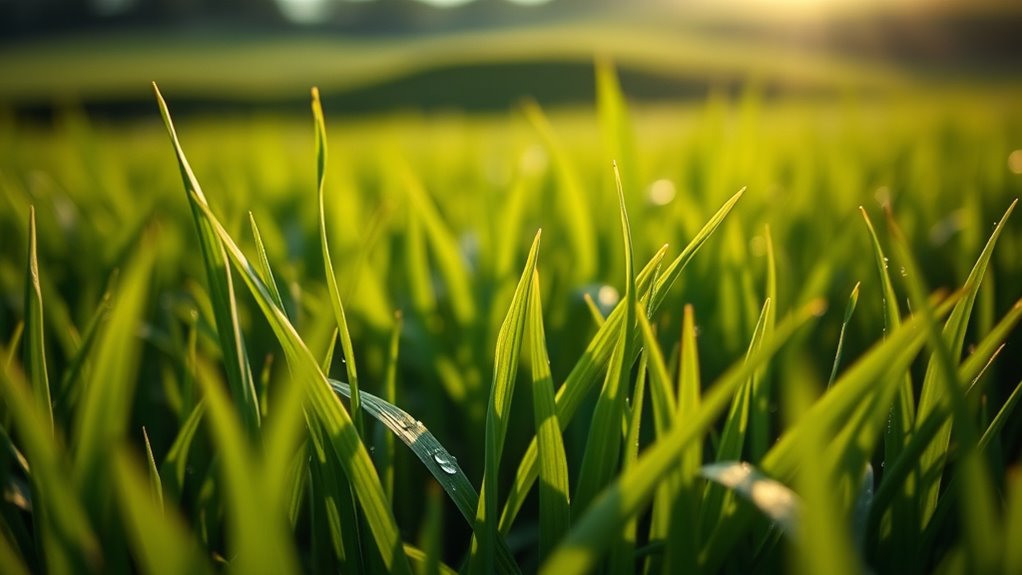
Camera sensors play a crucial role in determining the noise levels in your images, especially in low-light conditions. The sensor’s performance directly affects how well it manages noise, with larger sensors generally producing cleaner images at higher ISO settings. Sensor size influences noise characteristics; bigger sensors gather more light, reducing grain and boosting image quality. Additionally, advanced sensor technology, like back-illuminated designs, improves light sensitivity and minimizes noise. The type of sensor also impacts dynamic range and color accuracy, which can be compromised by high noise levels. Understanding these core aspects helps you choose a camera that balances sensor performance with noise control, ensuring clearer, sharper images in challenging lighting situations. Ultimately, the sensor’s design and quality shape your camera’s ability to produce noise-free images in various conditions.
Best Practices for Shooting in Low Light Conditions
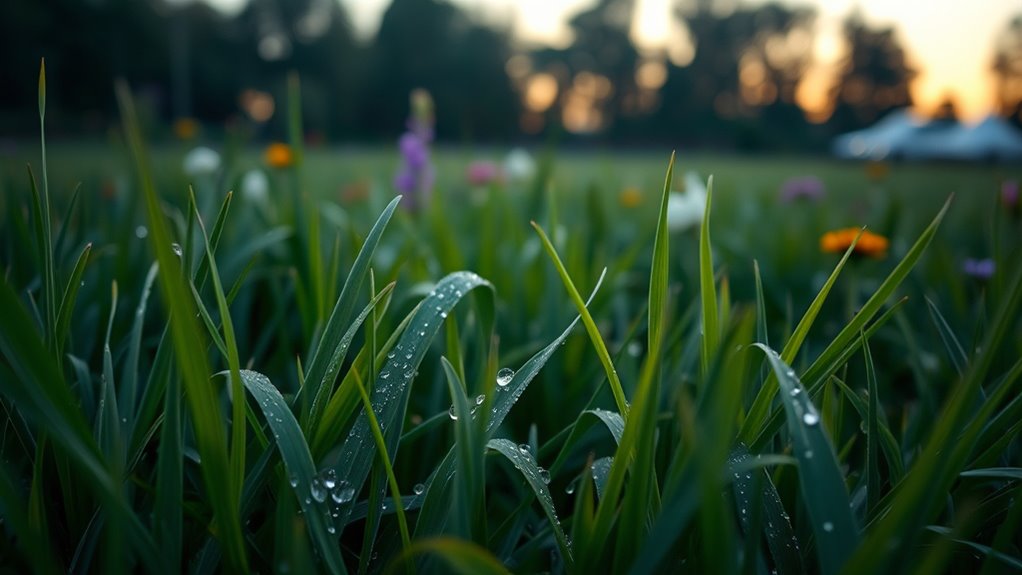
When shooting in low light, using a wide aperture lets in more light and keeps your images sharp. Be cautious with increasing ISO sensitivity, as too much can introduce noise, so adjust it carefully. Also, stabilize your camera with a tripod or steady surface to avoid blur and get clearer shots.
Use Wide Aperture Settings
In low light conditions, using a wide aperture is one of the most effective ways to capture brighter, clearer images. A wider aperture allows more light to reach your camera sensor, reducing the need for higher ISO settings that can introduce noise. However, be mindful of lens distortion, which can become more noticeable at wide apertures, especially with certain lenses. To guarantee accurate color calibration, check your camera’s white balance settings, as wide apertures can sometimes affect color accuracy. Using a wide aperture also helps achieve a shallow depth of field, making your subject stand out sharply against a blurred background. Adjust your aperture carefully based on your scene to balance brightness, sharpness, and potential distortion for ideal low-light shots.
Increase ISO Sensitivity Carefully
Adjusting your ISO sensitivity is a key step in low-light photography, but increasing it too much can introduce unwanted noise. To manage this, focus on proper ISO calibration to ensure your camera is optimized for the conditions. Raise ISO gradually, and monitor the grain management carefully; small adjustments can help you find the right balance between brightness and noise. Higher ISO settings boost sensitivity but also amplify grain, so avoid overdoing it. If possible, test your camera’s limits beforehand, so you know the threshold where noise becomes unacceptable. Using noise reduction software in post-processing can help, but prevention is better. Remember, the goal is to increase ISO just enough to maintain image clarity without sacrificing sharpness due to excessive grain.
Stabilize Camera Properly
To capture sharp images in low light, you need to stabilize your camera effectively. First, ensure tripod stability by securing it on a level surface and tightening all joints. A stable tripod prevents unwanted movement and keeps your shot steady. When shooting handheld, use proper techniques like bracing your elbows against your body and holding the camera close to your face for added support. Keep a firm grip and avoid sudden movements. If possible, use image stabilization features on your lens or camera body. You can also stabilize by leaning against a solid object or crouching to minimize shake. Combining tripod stability with good handheld techniques reduces blur, allowing you to shoot at lower shutter speeds without sacrificing sharpness in low-light conditions.
When to Use Noise Reduction Tools Without Losing Detail
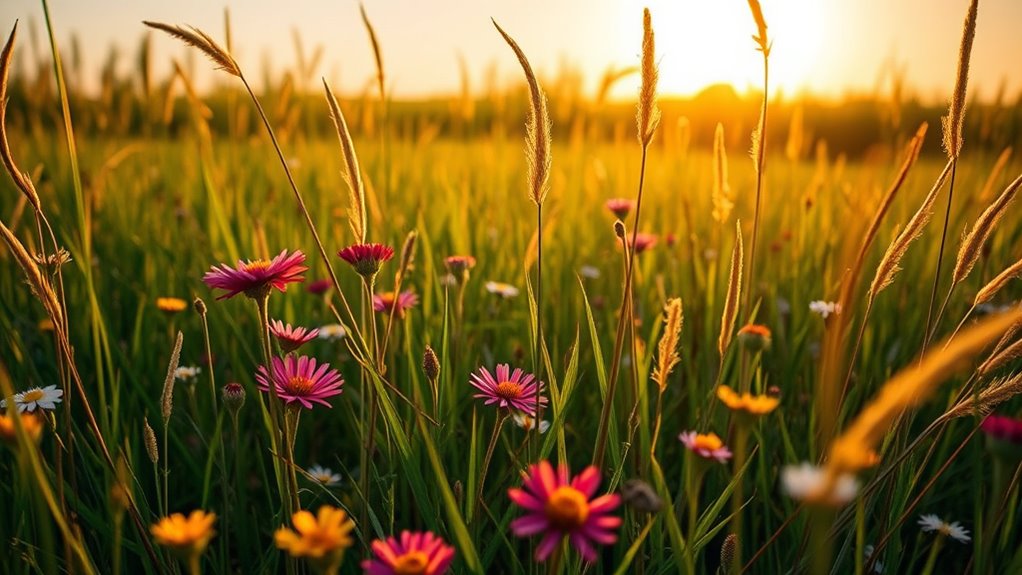
Understanding when to apply noise reduction tools without sacrificing detail is essential for achieving high-quality images. Use noise reduction sparingly, especially when subtle details matter, like fine textures or lens coatings that affect image clarity. Apply it after initial sharpening and color grading to prevent loss of detail.
Here’s a quick guide:
| When to Use Noise Reduction | Key Consideration |
|---|---|
| In low-light conditions | Avoid over-smoothing delicate details |
| For portraits | Preserve skin textures and sharp edges |
| During post-processing | Balance noise reduction with sharpness |
Use noise reduction tools carefully, ensuring you retain essential details while minimizing noise. This approach helps maintain the natural look of your images without sacrificing sharpness or clarity.
Common Mistakes That Increase Noise or Blur Sharpness
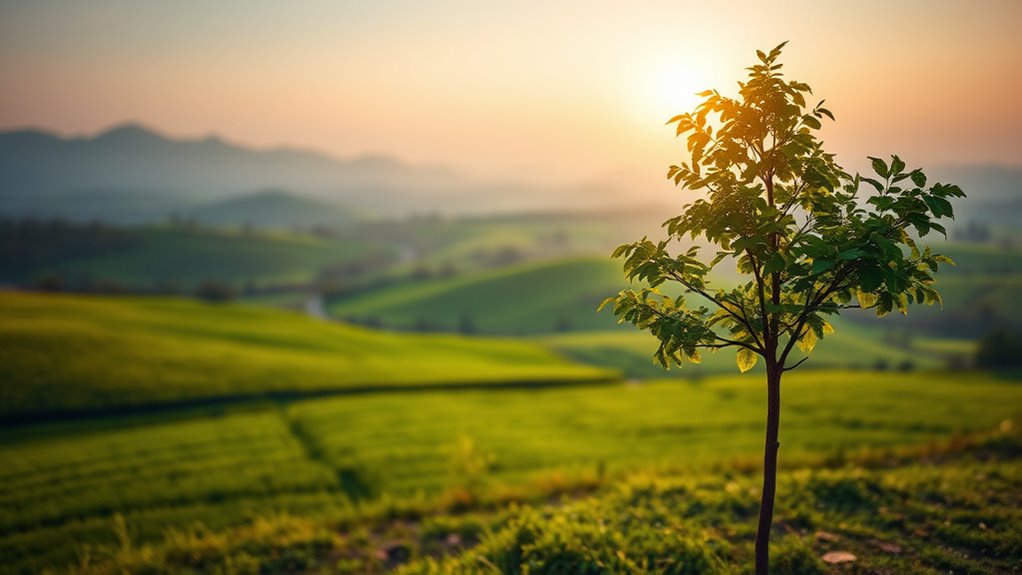
One common mistake that can worsen noise or blur sharpness is applying excessive editing without considering the impact on image quality. Over-sharpening or heavy noise reduction can introduce artifacts or soften details, especially if your camera has a small sensor size. Smaller sensors tend to produce noisier images at higher ISO levels, so aggressive noise reduction can make images look artificially smooth and lose detail. Additionally, using cheap or low-quality lenses can reduce sharpness and increase the likelihood of blur, especially at wider apertures. Poor lens quality also amplifies aberrations, which can be mistaken for noise or softness. Always consider your sensor size and lens quality before editing heavily, and aim for a balanced approach to preserve sharpness while controlling noise.
Tips for Achieving Optimal Results in Different Shooting Scenarios
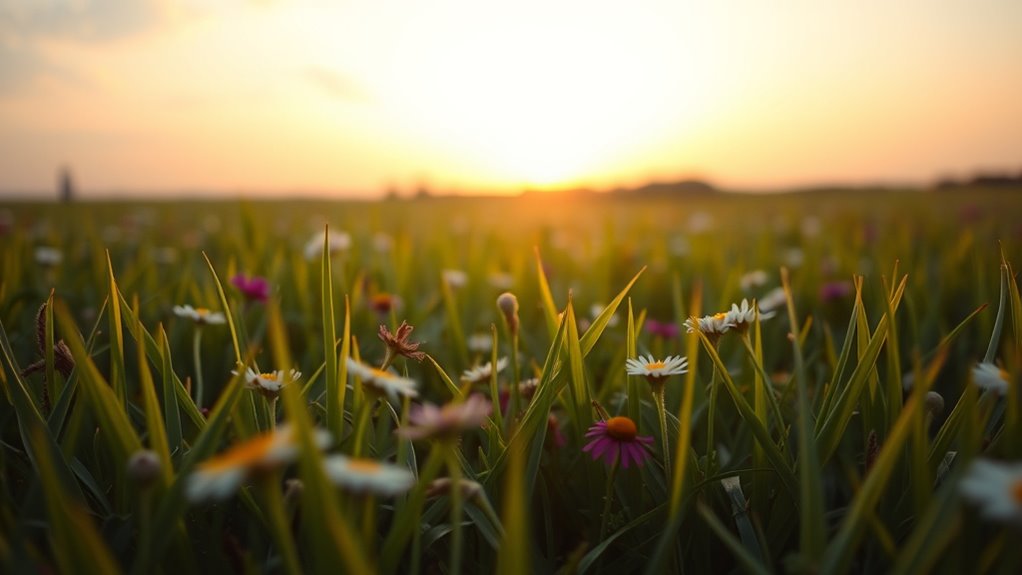
Achieving ideal sharpness and minimal noise depends heavily on your shooting scenario. For landscapes, guarantee your lens calibration is accurate to avoid softness or distortion, and use a small aperture to maximize depth of field. In low-light situations, prioritize a camera’s ISO settings to reduce noise, but avoid overdoing it. When capturing scenes for color grading, shoot in RAW to retain maximum detail and dynamic range, giving you more flexibility during post-processing. Different scenarios may require adjusting shutter speed or using stabilization gear to prevent blur. Always review your images on a calibrated monitor to accurately assess sharpness and noise levels. Proper lens calibration and thoughtful post-processing, including color grading, will help you achieve optimal results regardless of the environment.
Frequently Asked Questions
How Does Lens Quality Influence Perceived Sharpness and Noise in Images?
Lens quality directly affects perceived sharpness and noise in your photos. Better lens construction ensures precise light focus, resulting in sharper images, while high-quality optical coatings reduce glare and flare, enhancing clarity. Cheap lenses often introduce aberrations, decreasing sharpness and sometimes amplifying noise, especially in low light. Investing in a well-made lens with advanced coatings helps you capture clearer, more detailed images with less noise, improving overall photo quality.
Can Using Different Camera Brands Affect Noise Performance at the Same ISO?
Yes, using different camera brands can affect noise performance at the same ISO. This mainly comes down to sensor technology and image processing. Some brands utilize advanced sensors that reduce noise, even at higher ISO settings, while others rely on sophisticated image processing algorithms to clean up noise during processing. So, your choice of camera brand influences how clean or noisy your images appear at the same ISO setting.
What Role Does Sensor Size Play in Noise Levels and Image Detail?
Sensor size plays a vital role in noise levels and image detail. Larger sensors typically produce 2-3 stops less noise at the same ISO, allowing you to shoot at higher sensitivities without sacrificing quality. They also capture more image detail because of bigger pixels, resulting in sharper, more detailed photos. If you want cleaner images with richer detail, choosing a camera with a bigger sensor should be your priority.
How Do Weather Conditions Impact Noise and Sharpness During Outdoor Shoots?
Weather fluctuations and temperature effects considerably impact noise and sharpness during outdoor shoots. When temperatures drop, your camera sensor can produce more noise, making images look grainy. Humidity and sudden weather changes can also introduce moisture, affecting lens clarity and sharpness. Bright sunlight can enhance detail, but overcast or rainy conditions may soften images. To minimize these issues, shoot during stable weather and adjust your camera settings accordingly.
Are There Specific Accessories That Help Reduce Noise or Enhance Sharpness?
You can enhance your outdoor shots by using filter adapters and tripod stabilizers. Filter adapters help reduce noise by cutting down glare and unwanted light, while tripod stabilizers improve sharpness by minimizing camera shake. Both accessories work together to create clearer, more detailed images. Invest in these tools, and you’ll see a noticeable difference in your photos, making your outdoor photography sharper and cleaner even in challenging weather conditions.
Conclusion
Now that you know how to balance sharpness and noise, you’ll be better prepared to capture stunning images in any situation. Remember, it’s all about finding that sweet spot—sometimes you have to accept a little noise to get the shot you want. With practice, you’ll learn when to push the limits and when to dial things back. Keep experimenting, and don’t be afraid to learn from mistakes—that’s how you’ll really sharpen your skills.
